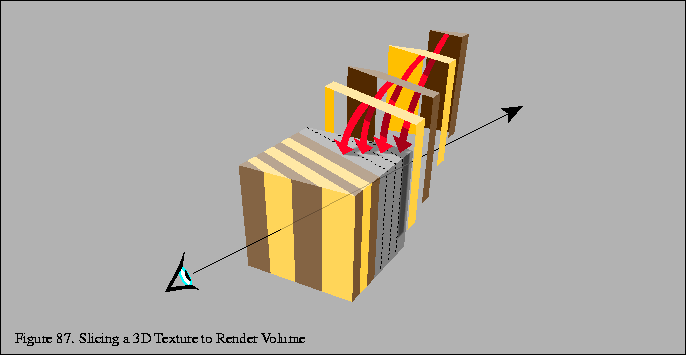
The technique for visualizing volume data is composed of two parts. First the texture data is sampled with planes parallel to the viewport and stacked along the direction of view. These planes are rendered as polygons, clipped to the limits of the texture volume. These clipped polygons are textured with the volume data, and the resulting images are blended together, from back to front, towards the viewing position. As each polygon is rendered, its pixel values are blended into the framebuffer to provide the appropriate transparency effect. See Figure 87.

If the OpenGL implementation doesn't support 3D textures, a more limited version of the technique can be used, where 3 sets of 2D textures are created, one set for each major plane of the volume data. The process then proceeds as with the 3D case, except that the slices are constrained to be parallel to one of the three 2D texture sets.
Close-up views of the volume cause sampling errors to occur at texels that are far from the line of sight into the data. To correct this problem, use a series of concentric tessellated spheres centered around the eye point, rather than a single flat polygon, to generate each textured ``slice'' of the data. As with flat slices, the spherical shells should be clipped to the data volume, and each textured shell blended from back to front. See Figure 88.